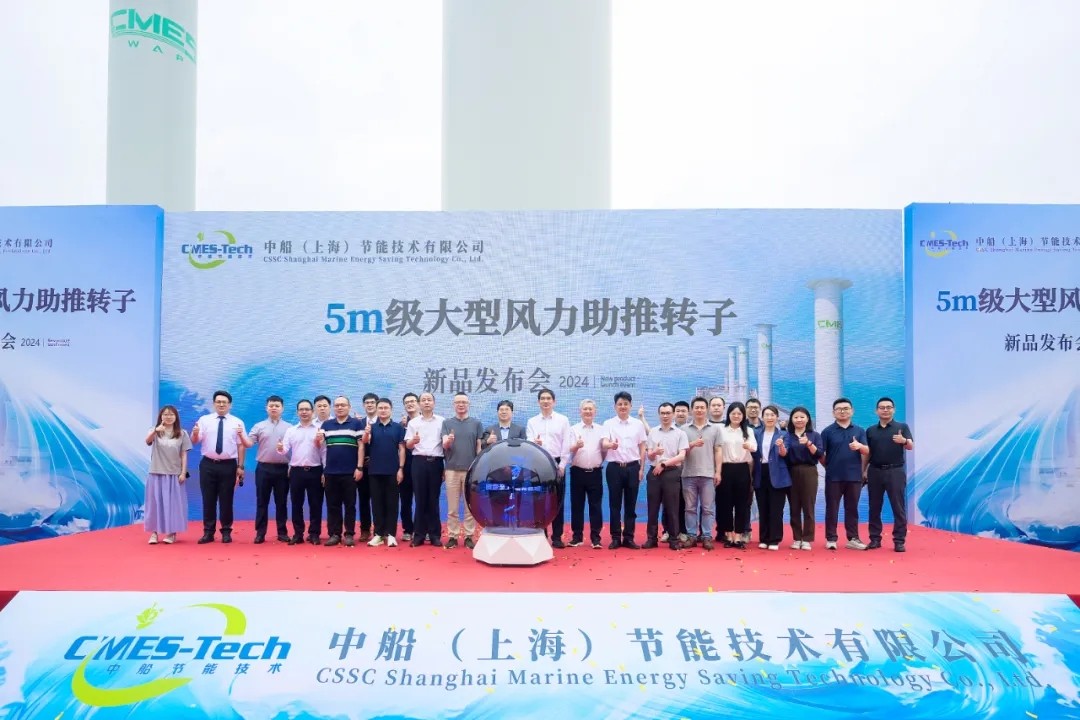On May 31, 2024, CSSC (Shanghai) Marine Energy Saving Technology Co., Ltd. held a grand launch event in Shanghai, introducing their groundbreaking 5M large-scale wind-assisted rotor. After 12 years of dedicated research and development, this next-generation ship energy-saving device was finally unveiled, marking a significant milestone in the maritime industry.
Dr. Wu Wenwei, Deputy Director of China Ship Scientific Research Center, delivered a keynote speech, emphasizing the company's commitment to innovation and quality. He highlighted the remarkable journey from basic research in aerodynamics and material performance, through rotor model wind tunnel tests and full-scale trials, to the creation of the 1.8m rotor prototype and the successful application of the 2.9m rotor on actual vessels. The introduction of the 5M wind-assisted rotor is a testament to the relentless effort and perseverance of CSSC and the 702 Research Institute.


In response to the International Maritime Organization's (IMO) new regulations on greenhouse gas emissions (EEDI, EEXI, and CII), wind-assisted propulsion has emerged as an ideal solution for energy-saving and emission reduction. The rotor operates on the Magnus Effect, akin to the spin seen in banana kicks in soccer or curveballs in table tennis.
CSSC (Shanghai) Marine Energy Saving Technology Co., Ltd, leveraging its strong research foundation, targeted the wind-assisted rotor project. Through theoretical analysis, model testing, and prototype trials, they overcame six key technological challenges, including rotor aerodynamics, mechanical structure, and energy-saving effect forecasting methods.
The newly launched 5M rotor, the first of its kind in China, is designed to enhance energy efficiency and CII ratings for ships of 80,000 tons and above. Depending on the deck space, up to five units can be installed, achieving over 20% energy savings. For instance, installing three units on an 82,000-ton bulk carrier can save over 600 tons of fuel and reduce carbon emissions by approximately 2,000 tons annually.
The device boasts three main advantages: superior sustained thrust (up to 260kN), long-term stability (with excellent performance under 180rpm continuous operation), and ease of maintenance (with clear internal system layouts ensuring safety and convenience).







